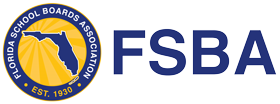We often hear the terms “good governance” or “effective governance,” but what exactly does that mean? Nearly everyone recognizes bad governance when they see it. Bad governance is when board members operate independently of each other. We see bad governance when board members try to control the superintendent and their staff. Board members practicing bad governance believe it is their responsibility to tell others what to do; sometimes you see their ego before you see their actions. Bad governance is when board members walk into a school and start directing staff. You know it when you see it, but what does good governance look like?
Good governance looks a lot like a well-managed classroom- you know it when you see it. In a well-managed classroom, students know what they are supposed to be learning and doing and are focused on those objectives. They know their roles, they know their limitations, collaborate with others and behave in ways that aid everyone’s learning.
Good governance looks a lot like this, with perhaps the additional piece of supporting decisions the board makes. But that is all about respect, which is part of “behaving in ways that aid in everyone’s learning.”
Board members pursuing good governance: (1) know what they are supposed to be doing, (2) focus on the issues at hand, (3) know their roles and responsibilities, (4) function as a part of a team, (5) speak and act for the greater good and, (6) speak with a united voice about board actions and decisions. We recognize this good governance when we see it or are a part of it.
School board members practicing good governance know what they are supposed to be doing. They come to meetings prepared to discuss, deliberate and decide. No one is opening his or her board packet for the first time when he or she walks through the door. They have read their packets and background information in advance. If they had questions on the content of the meeting, they asked the superintendent for clarity. Questions that board members ask during the meetings are reasonable, rational and expected questions that improve the decision making process.
Focusing on the issue at hand means we are saying what needs to be said, when it needs to be said- and in a way that it needs to be said. When boards practice good governance, each board member is able to share his or her thoughts on the issue being addressed. Topics are discussed, issues are explored and disagreement is standard practice. The challenge is that many of us have not learned to discuss difficult issues- where we disagree with the majority around us- in a civil manner. In good governance, however, dialogue is encouraged and all voices are heard.
Naturally, when we begin our board service, we want to roll up our sleeves and fix everything in the district. We quickly learn that is not our job, but the superintendent’s. Our focus should be on setting policy, establishing strategic goals and monitoring the performance of the school system. Once we figure that out, then we can begin to practice good governance.
Functioning as a part of a team is often the most difficult aspect of board service for many. The concept may be understood, but the Sunshine Law, community concerns, political issues and mandated accountability contribute to making it a challenge to work as a team. Remember, there is a process to go through for everything. A budget process, a grievance process, a hiring process, a community input process, a scheduling process, etc. Practicing good governance is about establishing and monitoring processes.
School board members practicing good governance speak and act for the greater good. They respond when issues and concerns arise, keeping the focus on district priorities and objectives. Speaking and acting for the greater good applies not just to our words and overt actions but also to our gestures and expressions. The dais is no place for smirking, eye-rolling, inattentiveness and grandstanding. It is important to remember that these behaviors can influence the behaviors of the staff and students in our school districts. Good governance looks like all members of the leadership team are respectful of each other.
You know it is good governance when boards function as model citizens, valuing an exchange of ideas, seeking diverse perspectives and acting in the best interest of others. The leadership team practicing good governance discusses issues and concepts, not people and personalities. They listen to constituents’ ideas and concerns but avoid being swayed by personal and special interests. After listening to all concerns and considering all sides of the issues, the board then speaks with a united voice on board actions and decisions.
Boards practicing good governance function at a strategic level with a long-term view in focus. The board provides the superintendent with clear direction and parameters- speaking with a united voice.
Keeping these six principles in mind, school board members will find themselves and the leadership team functioning smoothly as a model of good governance.
Adapted from an article by Phil Gore a division director to TASB Leadership Team Services.






